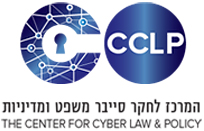PIs: Dr. Dan Feldman, Dr. Eldar Haber.
Abstract:
Information gathering practices has enhanced in our interconnected era. Technological developments combined with human' interest in collecting and making use of data are turning the Orwellian state non-fictional. One of these latest developments include the Internet of Things (IoT), whereby users are now able to be constantly connected to the internet through various means like home automation (smart homes), smart TVs, smartphones, wearables, and through many other ‘things’. Within the realm of IoT, a cohort of devices emerged: devices that operate in an 'always mode' ('always on' devices) like Amazon Echo or Google Home. These developments obviously have both benefits and drawbacks from a social perspective. From the aspect of data use, there is much value in the information that is gathered and analyzed. On the other hand, from an informational privacy perspective, one of the drawbacks is that these devices do not generally distinguish between the types of information that is gathered. In other words, from a technological and legal perspective, there is no much difference between the personal information of adults vs. children nor sensitive vs. non-sensitive data. The underlying question of this research is whether the ubiquitous surveillance era necessitates recalibrating our notion of the right to privacy, and more closely, should we distinguish between different levels of privacy protection? In other words, is there a viable method to measure privacy? And if so, what mathematical tools are available to conduct such measurements without substantially decreasing the value of information?
© 2018 THE CENTER FOR CYBER LAW & POLICY. All rights reserved.





